Social Media SWOT Analysis Guide
İpek Aktaş
Today, navigating social media can feel like sailing the high seas. Sometimes, it’s smooth sailing with clear skies, but you might find yourself caught in a storm at other times. That’s where a trusty compass – your social media SWOT analysis – comes in. In this guide, we’ll explore how to perform a SWOT analysis for your social media strategy, helping you chart your course through the wild waters of likes, shares, and comments. We’ll break down strengths, weaknesses, opportunities, and threats and equip you with the tools to steer your social media ship toward success.

What is SWOT Analysis?

SWOT analysis is a strategic management method used to assess the strengths and weaknesses of an organization or project, or idea. Let us save you from the trouble; SWOT is an acronym consisting of the initials “Strengths”, “Weaknesses”, “Opportunities”, and “Threats”.
A social media SWOT analysis assesses the strengths, weaknesses, opportunities, and threats associated with the use of social media. Businesses or individuals can use SWOT analysis to plan their social media strategy or evaluate their existing social media presence.
The purpose of conducting a SWOT analysis is to provide you with a greater understanding of your marketing strategy and overall business situation. It allows you to gain insights that help you identify and address problems more effectively, as well as anticipate and prevent potential issues from arising in the future.

Here are the key elements of social media SWOT analysis:
Strengths: Strengths or advantages in a social media strategy. For example, a large following, a compelling content strategy, effective brand awareness, or creative campaigns.
Weaknesses: Weaknesses or shortcomings in the social media strategy. For example, limited resources, low engagement rates, poor content quality, or a limited following.
Opportunities: Opportunities or potential advantages arising from the use of social media. For example, access to new market segments, influencer collaborations, use of new features to increase engagement or discovery of a niche that has lagged behind the competition.
Threats: Threats or potential risks arising from the use of social media. For example, strong competition, negative user comments, rapidly changing algorithm updates, or reputation crises.
SWOT analysis can be used as a valuable tool for developing social media strategies, optimizing existing strategies, or minimizing risks. This analysis can guide the effective use of social media platforms and provides a framework for understanding the critical components of social media strategy.
The Importance of SWOT Analysis in Social Media Strategy
If you want to learn how SWOT analysis helps your business, here are several important benefits of conducting a SWOT analysis when developing a social media strategy;
- SWOT analysis allows you to objectively assess the strengths and weaknesses of your social media presence. This analysis helps you maximize the strengths and improve the weaknesses in your social media strategy. For example, you can emphasize your strengths, such as creative content strategies or effective brand management, and address your weaknesses, such as low engagement rates or poor content quality.
- A SWOT analysis reveals the opportunities and threats in your social media strategy. Since social media is a constantly changing environment, this analysis allows you to seize potential opportunities and take measures against possible threats. For example, you can identify the opportunity to access a new market segment or the threats that intense competition may pose.
- SWOT analysis helps you identify the strategic directions of your social media strategy. You can identify strategic opportunities to gain a competitive advantage by matching your strengths with opportunities. Likewise, you can take strategic measures to minimize risks by checking your weaknesses with threats.
- A SWOT analysis guides your decision-making process regarding your social media strategy. Based on the analysis results, you can determine the right actions to maximize your strengths, correct weaknesses, seize opportunities, and address threats. In this way, you can create a more effective and target-orientated social media strategy.
SWOT analysis is vital in developing a social media strategy, monitoring performance, and continuously optimizing the strategy. This analysis enables you to shape the social media strategy based on data and facts and to achieve more effective results.
Applying SWOT Analysis to Social Media

You can follow the steps below to apply SWOT analysis to social media:
1. Identify Strengths:
– Identify the strengths of your social media accounts. This could include a large following, high engagement rates, quality content, strong brand image, or creative campaigns.
– Analyze your content performance and identify the best-performing content and which factors contribute to its success.
– Analyze your competitors’ social media strategies and identify what differentiates you and makes you stand out.
Strengths in social media can be based on various factors.
- Large and Influential Followers: Having a large and active following on your social media accounts is considered a strength. The number and interaction of your followers allow your posts to reach a wider audience and increase interactions.
For instance, if a social media account of a health/beauty company has over 3M followers, it provides a strong position for the brand and increases engagement and interaction, accordingly.
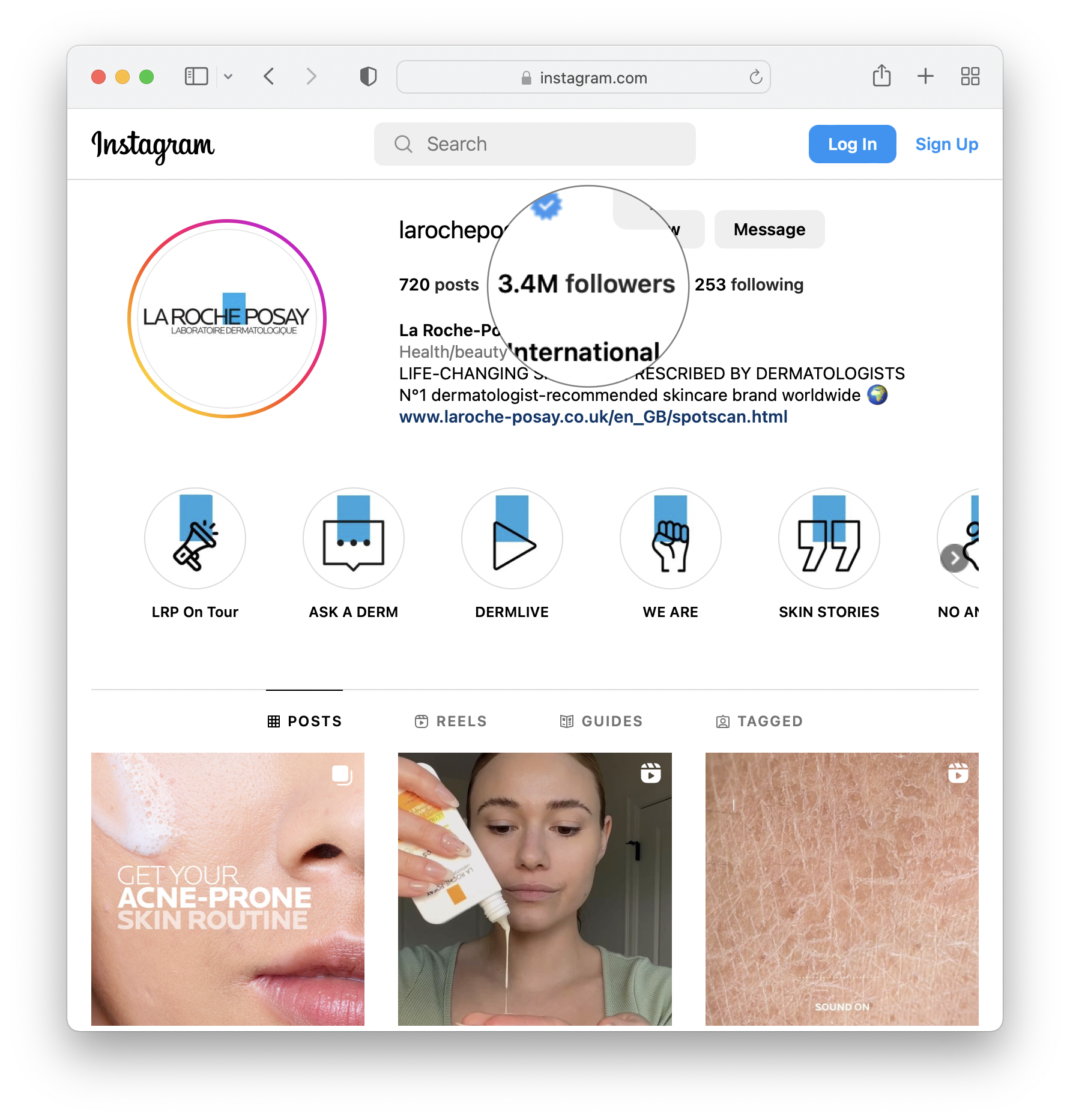
- High Interaction Rates: The content on your social media accounts receiving high interaction (likes, comments, shares) from your followers is also considered a strength. Well, what is the point of making posts if few people will see them? Interactions reflect the quality of your content and your ability to connect with the target audience.
- Quality and Engaging Content: If the content you share on your social media accounts is creative, engaging, and valuable, you have another strength. A good content strategy attracts your followers’ attention, strengthens your brand image, and increases interactions.
For example, Almost Skateboards create engaging post series on Instagram and show strong content creativity, resulting in higher interactions.
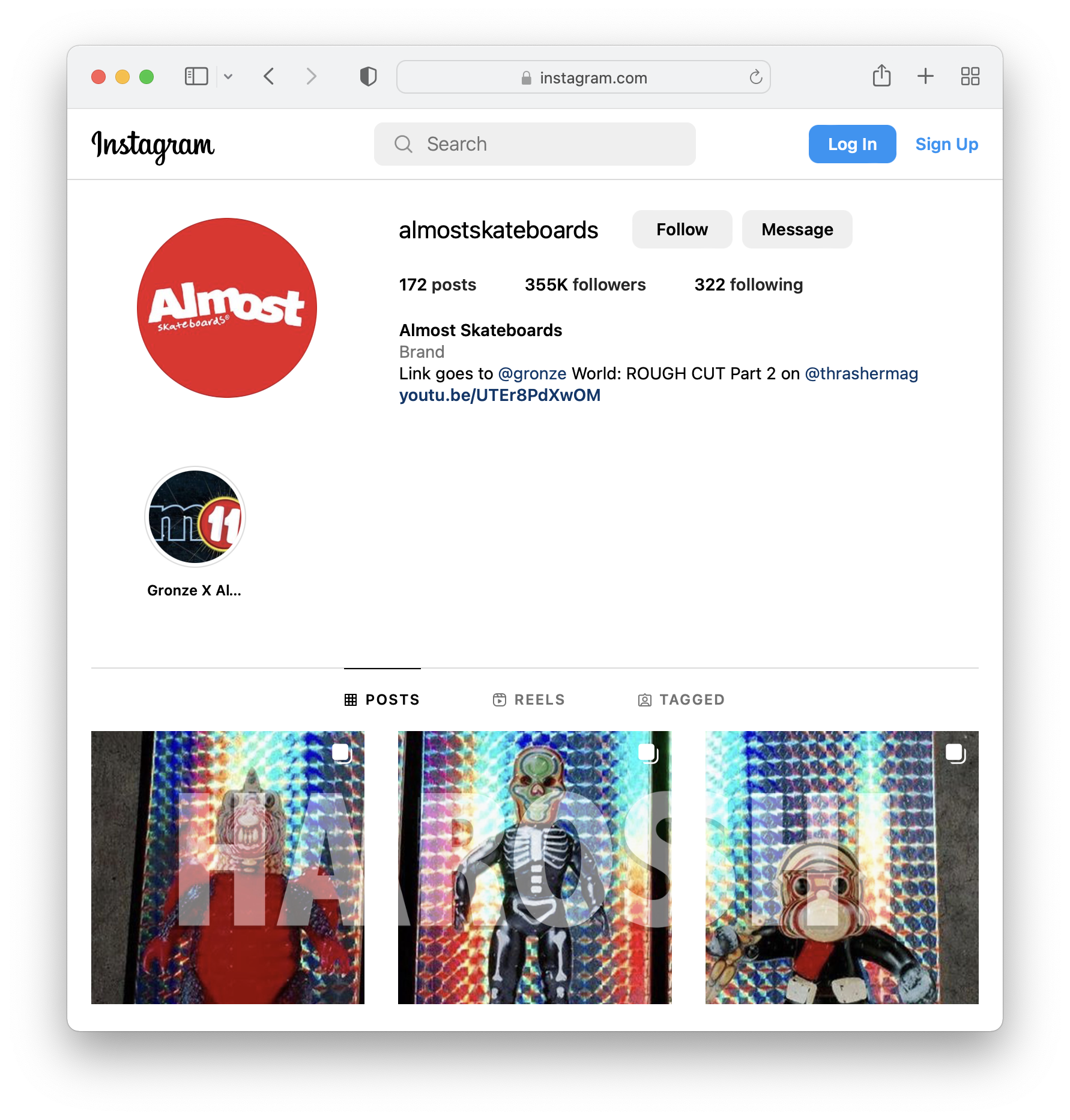
- Strong Brand Awareness: Building strong brand awareness through social media accounts creates a competitive advantage. A good brand image and loyalty allow followers to establish an emotional connection with your brand and create a strong brand identity.
- Good Customer Relations and Customer Service: Good customer relations and customer service on social media are also considered strengths. If people like your business, your brand reputation becomes a marketing element! Engaging with your followers, answering questions, and solving problems make people like your brand and help you build brand loyalty and increase customer satisfaction.
For example, our team reviewed PayPal’s social media customer service performance earlier this year, and the result of the study clearly shows that from big to small businesses, customer service on social media has a positive effect on the brand’s overall success on social media. Even having a page/account that is only dedicated to providing support is a good move!
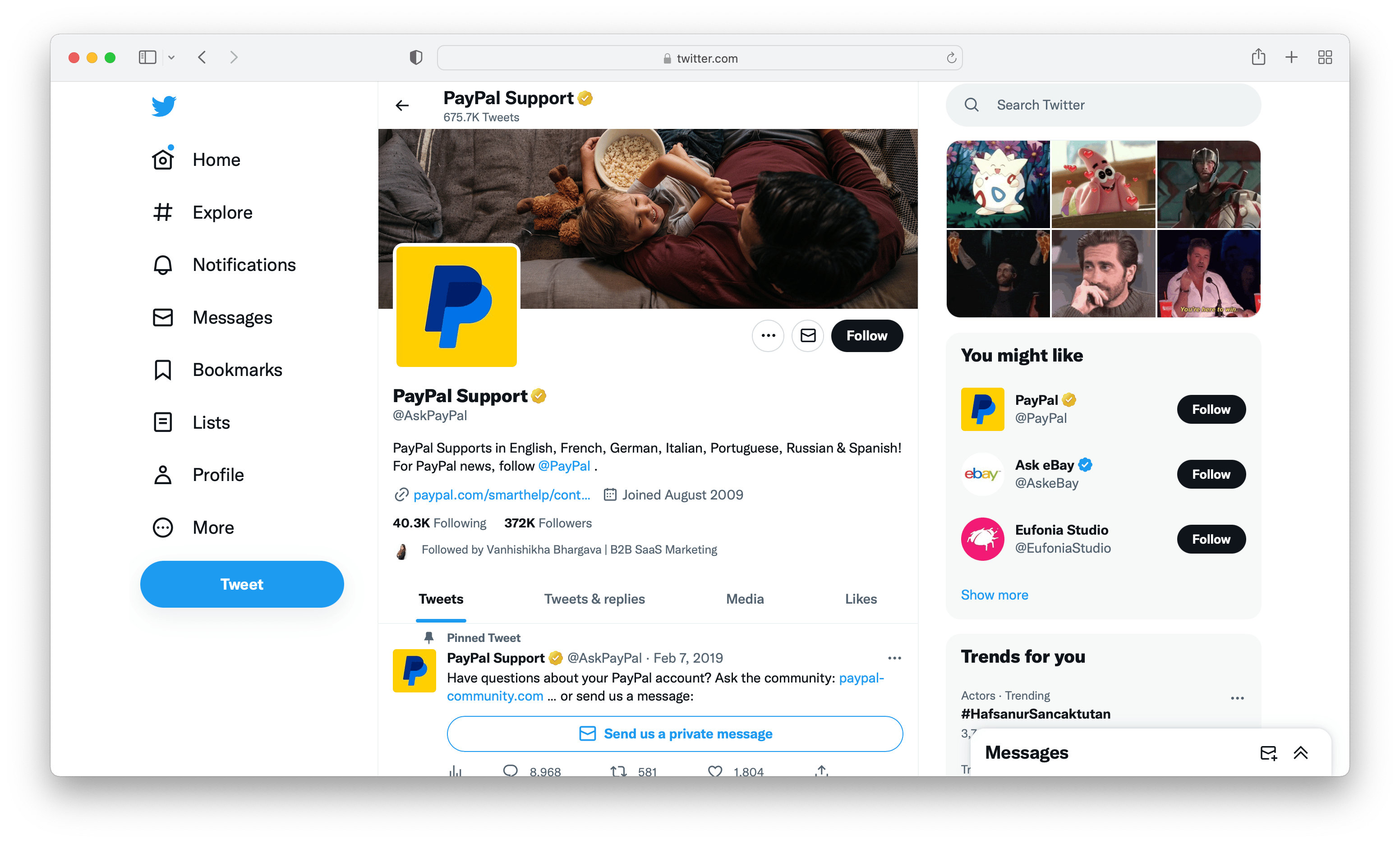
- Good Collaborations and Partnerships: Collaborating with other brands or partnering with influencers through your social media accounts is considered a strength. Collaborations allow you to reach a wider audience, increase your brand reputation and create new opportunities.
Another example from another skateboard brand – Birdhouse Skateboards, collaborates with Tony Hawk, one of the most influential skateboarders in the world. This creates a great strength for the brand.
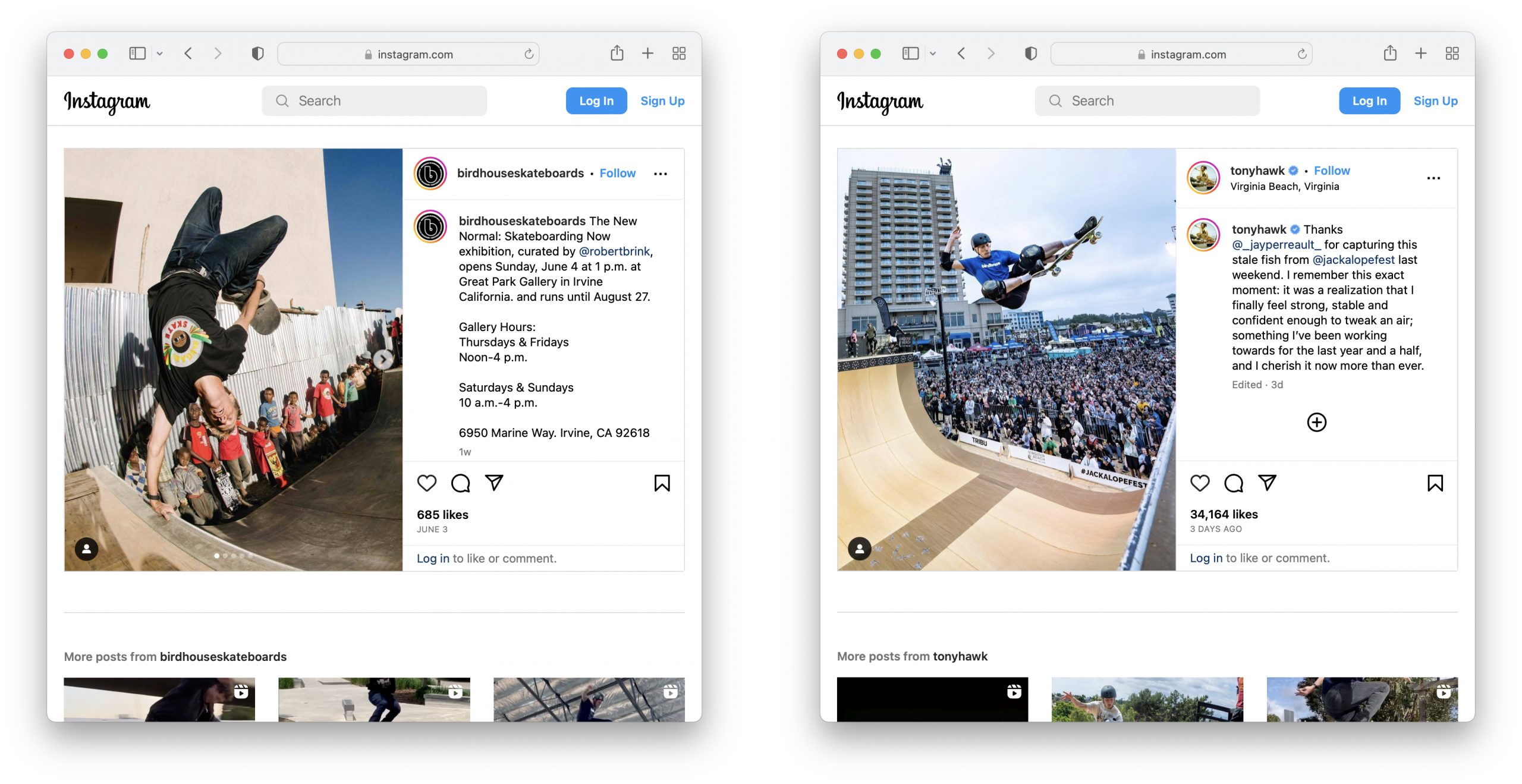
- Data Analysis and Measurement Capabilities: The ability to analyze the performance of your social media accounts is another strength. If you analyze and measure your data and capabilities, your future strategies will become better and better each time.
2. Identify Weaknesses:
– Identify the weaknesses of your social media accounts. These can be factors such as low engagement rates, low follower numbers, poor content quality, or low brand awareness.
– Objectively evaluate the performance of your social media accounts and try to understand the reasons for weaknesses.
– Consider user feedback and comments to determine which areas you need to improve.
Weaknesses in social media can be summarized as some main factors;
- Low Number of Followers: A low number of followers on your social media accounts is considered a weakness. The number of followers can prevent your content from reaching a wide audience and increasing interactions. Plus, some people might see this as suspicious, causing them not to trust your business.
For example, compared to a brand with a high number of followers, the one with a low number of followers can be considered weak – not because the brand is unreliable, but because it might “seem” like that.
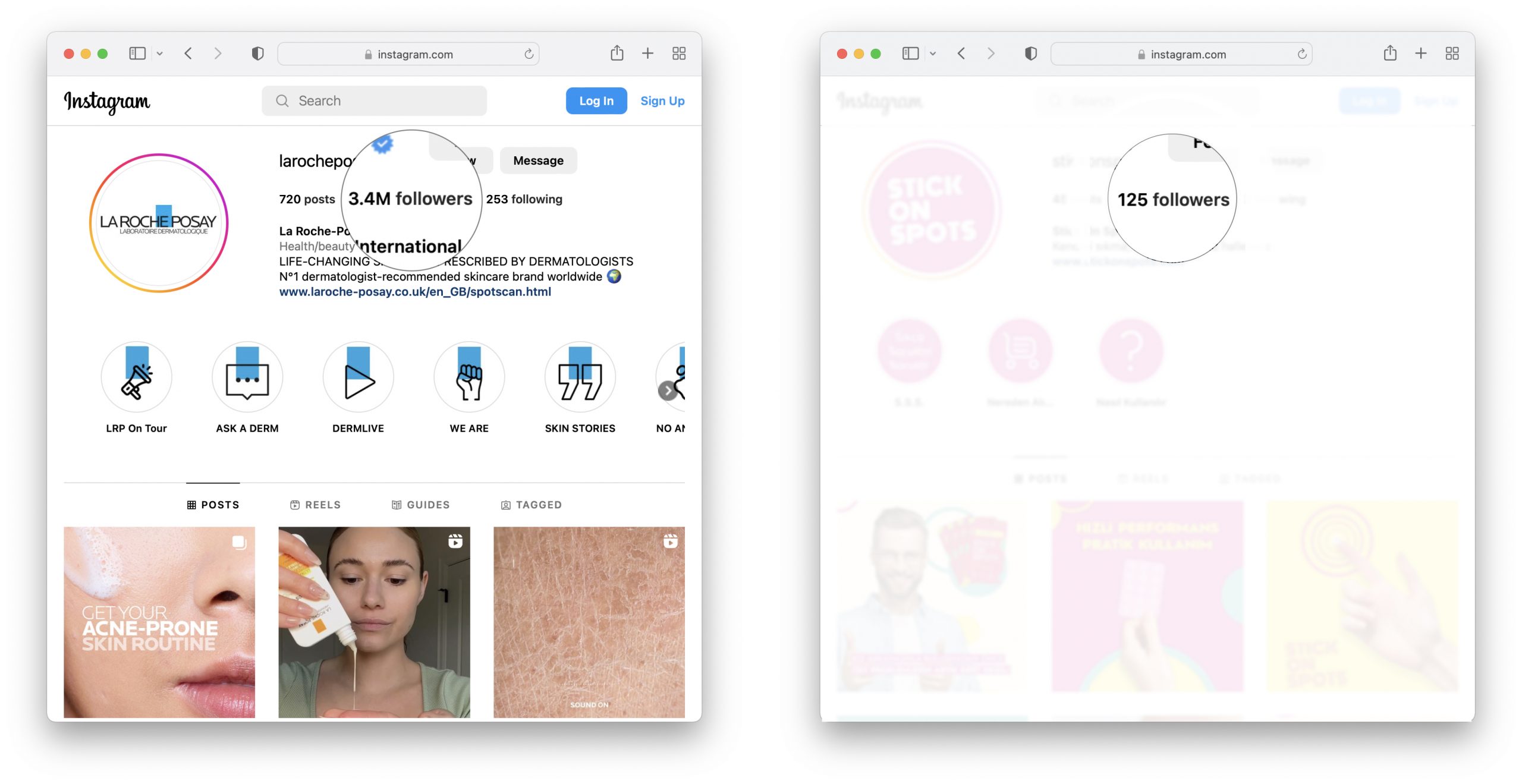
- Low Engagement Rates: Low interaction (likes, comments, shares) rates of the content on your social media accounts are considered a weakness. Low interactions may indicate that your content is weak in connecting or engaging with the target audience.
- Poor Content Quality: The low quality of your content risks not engaging your followers or negatively affecting your brand image. A lack of diverse and engaging content can create difficulties in engaging your followers and providing constant interaction.
- Poor Brand Awareness: Creating weak brand awareness through your social media accounts is considered a weak direction. If the brand image is incomplete or ambiguous, it may cause followers to not recognize or trust your brand. If they don’t trust your brand, they will go towards other similar businesses that they find trustworthy.
- Inadequate Customer Relations and Customer Service: Providing inadequate customer relations and customer service on social media is obviously a weakness. Failing to answer customer questions, resolve issues, or engage with followers can lower customer satisfaction and negatively impact brand reputation. If your posts are full of negative comments, new customers or curious people will likely get a bad image of your brand.
3. Identify Opportunities:
– Identify opportunities arising from the use of social media. This may include reaching a new audience, collaborating with influencers, utilizing new features, or adapting to trends.
– Follow industry developments and observe trends and innovations to identify potential opportunities.
– analyze the expectations and needs of your target audience and shape your social media strategy accordingly.
There are many opportunities for businesses (small and big) on social media.
- Reaching Large Audiences: Social media is a platform where brands can potentially reach millions of people. In fact, in 2023, it is estimated that 4.9 billion people across the world are using social media, a number that’s expected to jump to approximately 5.85 billion users by 2027. With the right strategies and target audience analysis, brands can tap into this vast audience to increase brand awareness.
- Connecting with the Target Audience: Social media enables brands to communicate directly and interactively with their target audience. With the right social media strategy, brands can establish an emotional connection with their followers, receive feedback and create customer loyalty.
- Content Marketing Opportunities: Social media enables brands to market by sharing their content, promoting their products or services, and providing valuable information. With creative and engaging content, brands can influence their target audience and drive conversions.
- Influencer Collaborations: Social media enables brands to reach a wider audience by collaborating with influencers. Influencers provide trust and interaction with large followers and promote brands’ products or services to a wider audience.
For instance, on social media, everybody loves house cleaning and decorating videos – sometimes called ASMR. Influencers that create related content have a very wide range of audience. So what? If you find a good influencer collab opportunity, go for it as Swiffer has done for their brand new PowerMop, which resulted in 400K views and 35K likes.
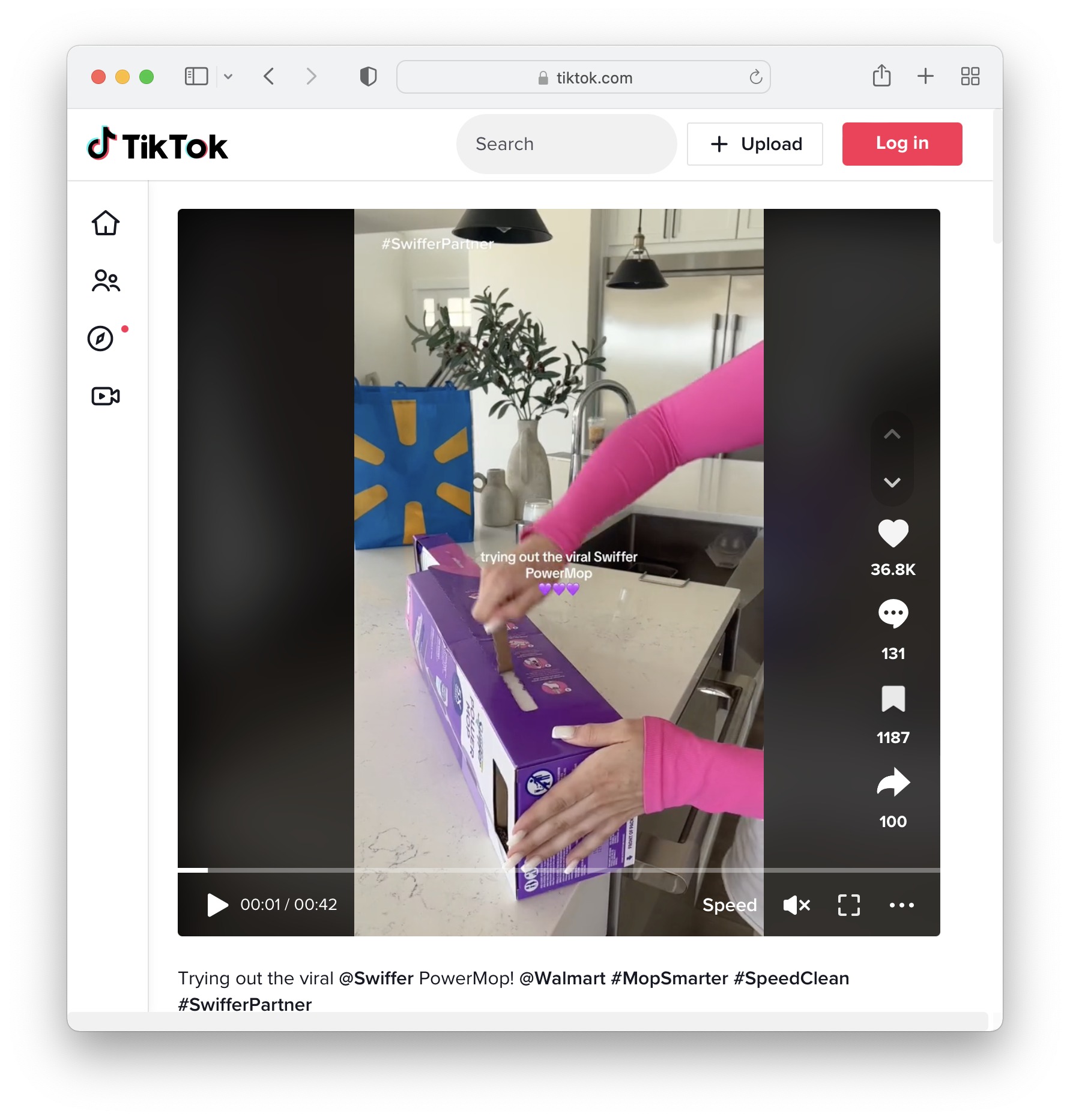
- Monitoring Trends and Market Research: Social media allows brands to follow trends and conduct market research. In this way, brands can capture market trends, understand their target audience’s needs and expectations, and shape their strategies accordingly. Hang out on your Instagram feed and TikTok discovery page, and find your trend!
- Competition Analysis: Social media enables brands to monitor the activities of their competitors. In this way, brands can analyze their competitors’ social media strategies, identify differentiation opportunities and gain a competitive advantage.
- Sales and Conversion Opportunities: Social media is a platform where brands can directly promote their products or services and make sales. In fact, the social media app market was valued at a staggering $49.09 billion in 2022, with forecasts predicting a compound annual growth rate (CAGR) of 26.2% from 2023 to 2030. Thanks to sales-oriented features and advertising options, brands can use social media as a sales and conversion-oriented channel to tap into this growing market.
4. Identify Threats:
– Identify threats arising from the use of social media. These can include intense competition, negative user comments, reputation crises, or algorithm changes.
– Monitor your competitors’ social media strategies and activities and assess the impact of competition on you.
– Identify areas where you must address negative feedback, complaints, or crises for reputation management.
There are some threats to companies or brands on social media. Here are examples of potential threats on social media:
- Negative Content and Comments: Since social media allows everyone to share their opinions, brands may encounter negative content and comments. Customer complaints, bad reviews, or reputation crises can negatively affect brand image, especially if ignored.
- Crisis Management Challenges: As news spreads rapidly on social media, crises can snowball. Crisis situations such as the spread of misinformation, a bad experience, misunderstanding, or loss of reputation require good crisis management skills.
- Increased Competition: Social media is a platform where brands compete directly. Rival brands producing strong social media strategies and content can reduce brands’ competitive advantage.
- Privacy and Data Security: Social media users may face privacy and data security risks when sharing their personal data. Companies need to protect customer data and comply with privacy policies. Otherwise, people might lose their trust in your business, and you might even get in trouble.
- False Information and Fake Accounts: Spreading false information or fake accounts on social media might damage the reputation of businesses. Such accounts can misuse the name of brands or spread misleading information. Plus, seeing fake accounts in the comments section also causes a bad reputation for the brand.
- Fast and Excessive Reactions: Social media users can share their instant reactions on social media. Unfair criticism or misunderstandings can cause quick and excessive reactions and negatively affect the brands’ reputation.
- Platform Algorithms and Changes: Social media platforms can constantly update their algorithms and change content visibility. This may negatively affect brands’ content to reach followers and provide interaction if brands fail to keep up with the changes.
5. Create an Action Plan:
– Create an action plan based on the results of the SWOT analysis.
– Develop and implement strategies to further strengthen your strengths.
– Take measures to improve your weaknesses and find solutions to overcome deficiencies.
– Create strategies to capitalize on opportunities and address threats.
– Create a tracking and measurement plan to track your progress based on the goals you set and measurable metrics.
SWOT analysis is necessary before you shape and optimize your social media strategy. By re-evaluating your social media strategy based on the analysis results, you can highlight your strengths, address your weaknesses, seize opportunities and minimize threats.
How to Conduct Your Own Social Media SWOT Analysis
Conducting a successful SWOT Analysis can make your social media marketing strategy more effective and accurate, so businesses should make sure they conduct their own SWOT Analysis successfully.
First of all, you should start by identifying your strengths. Is your content more engaged on TikTok or Instagram? Are posts better for your interaction rates, or do you need videos/reels? What is the most engaging content on your social media? Why do people interact with you on social media?
Then, you should identify the weaknesses. Do you need more followers? Do you need more interaction rates? Is your content effective enough? Is there anything else you can do to enhance customer relations? Are there any content quality or variety weaknesses, difficulties in engaging with your followers, or missing customer relationships? Is there anything that your rivals are doing better than you?
When strengths and weaknesses are determined, your strategy has some key points to consider. But! Opportunities and threats will shape the strategy you should follow.
You should look for the opportunities that social media can provide for your business. How can your business reach large audiences via social media? How can you interact with the target audience? How can you increase brand awareness? What are your rivals doing to achieve this? What can you gain with influencer collaborations? What are the latest trends that will benefit your social media usage?
And lastly, look for the threats. Consider threats such as negative content and comments on social media, reputational damage, or crisis management challenges. Is there any content that might cause certain people to get offended? Are there any risks of misunderstanding? Are there any platform changes in terms of algorithms or rapid and extreme reactions?
Leveraging SWOT Analysis for Your Social Media Strategy
Making an analysis is the first step of your successful social media strategy. Using the findings cleverly is the key to achieving the ideal business strategy. Creating a social media strategy with a SWOT Analysis helps you create a successful and effective strategy by emphasizing your business’s strengths, improving its weaknesses, evaluating opportunities, and preparing for threats. This analysis creates a foundation to help you strengthen your business’s presence on social media and achieve your goals.
Once you finish the SWOT Analysis, you should evaluate each category and prepare a list. In the list, you should identify and prioritize the areas to solve the important problems more quickly. Identify the matters that require long-term planning. Prioritize your actions based on their impact on productivity, revenue streams, and marketing campaigns.
Turning Strengths into Opportunities
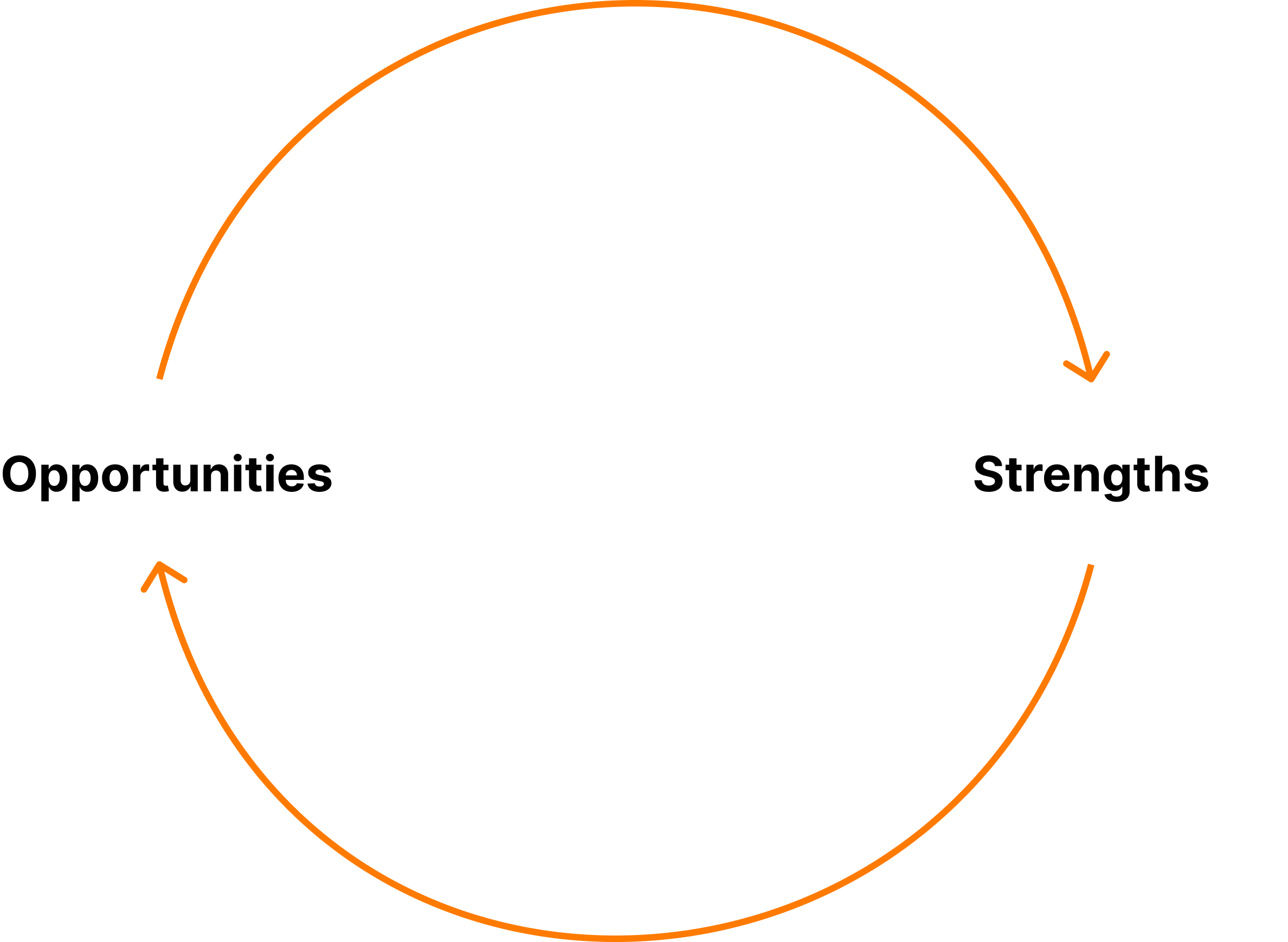
Having strengths is good, but turning them into opportunities is the best you can do with them. If your audience likes reels, you should focus on making more engaging reels. If your influencer collaborations enhance interaction, do more of them. Remember, you can always find an opportunity to improve your business.
Overcoming Weaknesses and Threats
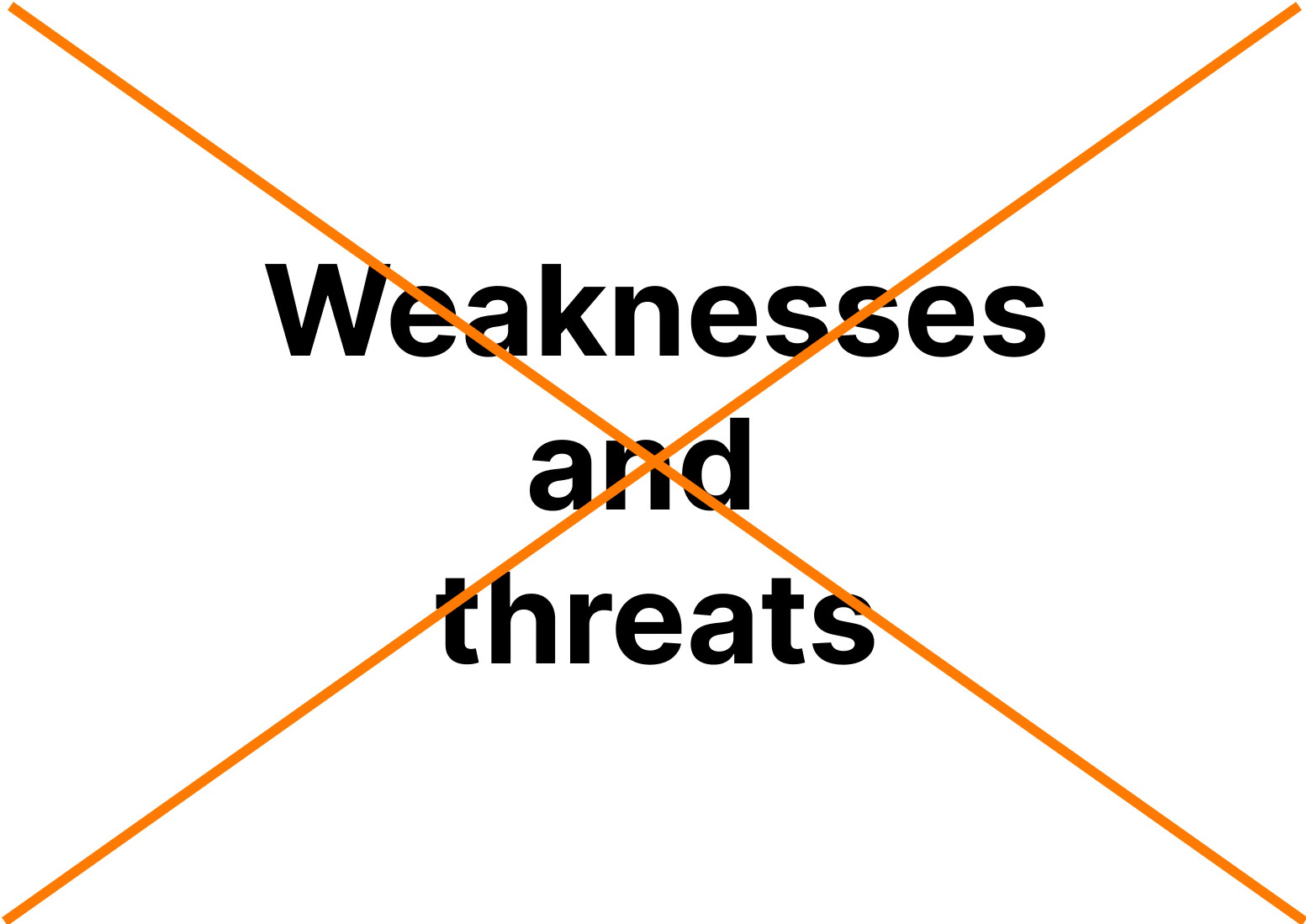
Identifying weaknesses and threats is perfect for shaping your current strategy in a better way because when you know your weaknesses and threats, you can do anything you need to reduce or even get rid of them.
Conclusion
So there you have it, a comprehensive guide to charting your social media strategy with a SWOT analysis. With these tips and tricks, you’re well-equipped to sail into the horizon, navigating the choppy waters of social media like a seasoned captain. Remember to keep a keen eye on your strengths and opportunities while simultaneously keeping your weaknesses and threats in check. By regularly revisiting your SWOT analysis, you’ll ensure that your ship is always on course, heading towards a bright future in the realm of social media. Safe travels, and may the wind always be in your sails!

